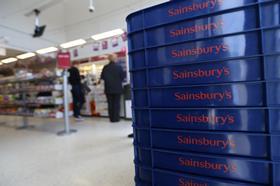
Supermarket sales have enjoyed their fastest rate of growth since October 2015, aided by strong fresh produce and flower sales.
Despite this, the market is still being held back by the ongoing price war and falling grocery prices, which are down by 1.6 per cent - a continuous decline which began in September 2014.
These latest grocery share figures from Kantar Worldpanel cover the 12 weeks ending 28 February 2016.
Fraser McKevitt, head of retail and consumer insight at Kantar Worldpanel, said: “Despite prices continuing to decline, the combination of Valentine’s Day, and consumers stocking up for an early Easter has boosted certain categories.
'Cut flowers have increased by 7 per cent; New Year resolutions to eat more healthily don’t seem to have been forgotten, helping fruit and vegetable revenues to grow by 4 per cent despite like-for-like produce prices falling.”
Across the main retailers, Sainsbury’s was again the only one of the 'big four' to increase overall spend. Sales grew for the eighth period in a row, up by 0.5 per cent - the longest run of sales growth for any of the four main retailers since March 2013.
The grocer has been boosted by strong online sales and its Sainsbury’s Local convenience stores, though its overall share remained flat at 16.8 per cent.
McKevitt added: “Tesco’s positive run continues as its overall sales fell by 0.8 per cent - halving last month’s decline of 1.6 per cent. A renewed focus on price promotions has helped stem the flow of shoppers leaving the retailer despite the closure of around 50 stores in the last year.
“Morrisons is also operating fewer stores than last year, which continues to contribute to its falling sales - this month down by 3.2 per cent, with its market share dipping to 10.6 per cent. Online, Morrisons’ sales are growing strongly, a trend set to continue in the coming months as the retailer converts more existing in-store shoppers to its e-commerce channel. Despite being a relative latecomer to online grocery, Morrisons’ forthcoming tie-up with Amazon could provide another boost to the business.”
Compared with the 0.5 per cent growth in the overall market, sales in larger stores have fallen by 2 per cent as consumers spend less per average trip in these shop formats. This has disproportionally affected Asda with its large stores, with sales falling by 4 per cent and market share down to 16.2 per cent.
Waitrose saw sales grow by 0.2 per cent, maintaining its 5.2 per cent share of the market for the third period in a row.
Across the smaller retailers, market share gains were made by The Co-operative, Aldi and Lidl.
The discounters’ combined share, meanwhile, climbed back to the 10 per cent high they reached before Christmas. Lidl’s sales grew by 18.9 per cent, and Aldi’s by 15.1 per cent.



